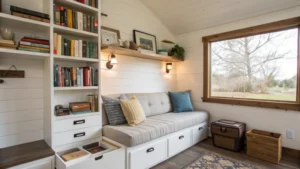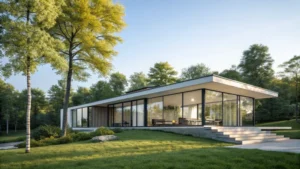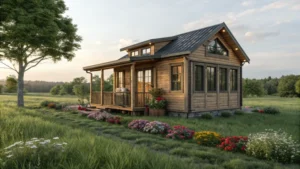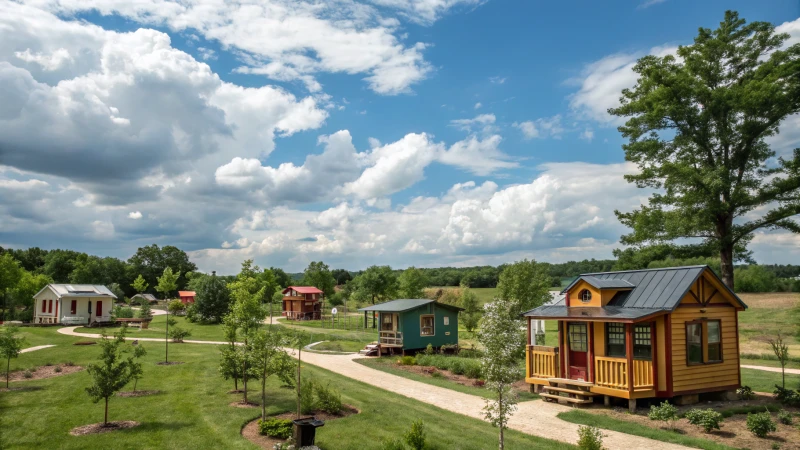
Have you ever dreamed of creating a cozy community of tiny homes, but felt daunted by the legal maze?
Yes, you can purchase land to place multiple tiny homes, but it’s crucial to navigate zoning laws, building codes, and utility needs. Each region has unique regulations that may impact your plans, so thorough research and planning are essential to make your tiny home community dream a reality.
While the idea seems simple at first, the journey to establishing a collection of tiny homes on one piece of land can be a bit like an intricate puzzle. I remember when I first explored this concept, and how daunting it seemed to untangle all the local zoning rules and building codes. It felt like learning a new language! But as I delved deeper, it became apparent that understanding these requirements and planning meticulously could actually transform my vision into a vibrant, self-sufficient tiny home community. Let's dive into what you need to know to bring such a vision to life.
Zoning laws always permit multiple tiny homes on one property.False
Zoning laws vary by region and may restrict multiple tiny homes.
Utility infrastructure is crucial for tiny home communities.True
Adequate utilities are essential for the functionality of tiny homes.
What Zoning Laws Affect Tiny Home Placement?
Tackling zoning laws for tiny homes feels like untangling a web of rules, but it's a crucial step in your tiny house adventure.
Zoning laws impacting tiny home placement differ by region and include residential classification, land use permits, and density restrictions. It's vital to review local ordinances to comply with these specific requirements.

Residential Classification
When I first started exploring the tiny home lifestyle, one of the biggest surprises was how differently tiny homes are classified. Depending on where you are, they might be seen as residential, recreational vehicles, or even mobile homes. This classification can completely change where you're allowed to place your tiny home. I remember chatting with a friend who had to move their tiny home because it was only allowed in RV parks in their area. So, diving into the local residential zones1 is a must.
Land Use Permits
Getting the right permits can feel like solving a puzzle. I once met someone at a tiny home workshop who shared their ordeal of securing permits for land zoned for agriculture. They needed special permissions just to ensure their home was legally placed. Whether your land is commercial or agricultural, figuring out the land use permits2 you need is crucial to keep everything above board.
| Zoning Category | Permit Requirement |
|---|---|
| Residential | Usually required |
| Commercial | Likely required |
| Agricultural | Often required |
Density Restrictions
I recall a conversation with another tiny home enthusiast who was heartbroken after learning about density restrictions that limited their plans for a tiny home community. Many places have strict rules about how many homes can sit on a piece of land, which is something to keep in mind if you're dreaming of setting up multiple tiny homes. Checking out local density regulations3 will help you avoid unexpected surprises.
Building Codes and Safety Regulations
Safety is non-negotiable, and local building codes are there to ensure it. I learned this firsthand when dealing with plumbing and electrical systems for a project. In some areas, tiny homes are treated like RVs, which can change the applicable rules dramatically. It's essential to get familiar with the building codes4 specific to your area to steer clear of legal hiccups.
Utilities and Infrastructure
A proper utility setup isn't just nice to have—it's essential. During my journey, I discovered how crucial it is to ensure connections for water, electricity, and waste management are up to par. Some regions might even require communal systems if you're setting up multiple homes together. Looking into utility setups5 early on can save a lot of headaches down the road.
Note: Always check with local planning departments to get the most accurate and up-to-date information tailored to your area.
Tiny homes are always classified as residential.False
Tiny homes can be classified as RVs or mobile homes, not always residential.
Land use permits may be required for tiny home placement.True
Permits are often needed, especially in non-residential zones.
How Do Building Codes Impact Tiny Home Communities?
Ever wonder how tiny home communities navigate the maze of building codes? It's like piecing together a puzzle that defines safety, design, and location.
Building codes shape tiny home communities by setting safety, construction, and zoning standards. They dictate the design and placement of homes, balancing safety and flexibility.
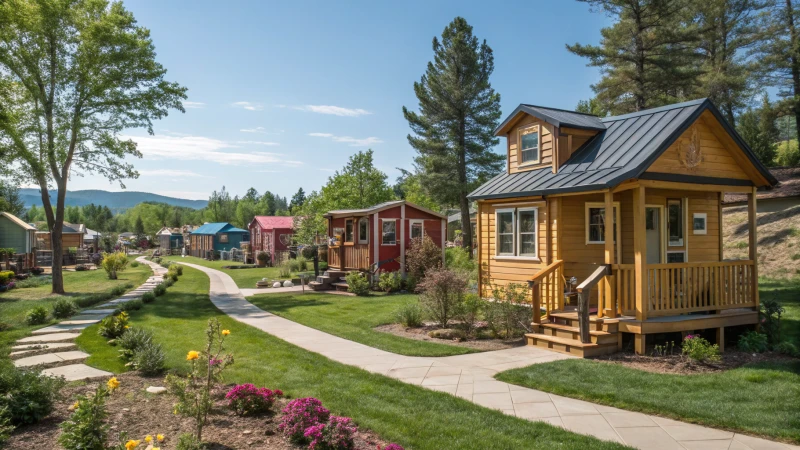
Building Codes and Tiny Home Safety Standards
When I first considered moving into a tiny home, the thought of building codes felt overwhelming. But then I realized these rules are here to keep us safe. Building codes make sure that everything from plumbing to electrical systems is up to scratch, giving me peace of mind about my cozy new space.
| Aspect | Importance |
|---|---|
| Plumbing | Ensures safe water supply and waste management. |
| Electrical | Prevents hazards like electrical fires through proper wiring standards. |
| Structural | Guarantees the stability of the building to withstand environmental forces. |
Zoning Laws and Land Use Regulations
Zoning laws can be a real puzzle. When I was scouting for a place for my tiny home, I quickly learned how these laws could make or break a location. They dictate whether you can even put a tiny home on a piece of land and sometimes require special permits.
- Zoning Classifications: Many areas have specific zoning classifications which might not accommodate tiny homes.
- Density Restrictions: Some regions limit the number of homes per acre, affecting how many tiny homes6 you can place on your property.
Utilities and Infrastructure Considerations
Setting up utilities was another big learning curve for me. Whether it was figuring out water connections or planning for electricity, each step was crucial to ensure my tiny home was fully functional.
- Water and Sewer: Shared systems might be necessary in some areas.
- Electricity: Proper planning ensures that each home has enough power without overloading the grid.
Navigating Local Government and HOA Requirements
Local governments and HOAs have their own sets of rules. I remember feeling a bit daunted by all the regulations at first, but understanding them was key to avoiding any future hiccups with my tiny home community plans.
- Government Incentives: Some local governments promote tiny homes for affordable housing.
- HOA Restrictions: Review HOA policies to ensure they permit tiny homes7.
Impact on Community Design
The way a tiny home community is designed can be heavily influenced by building codes. It’s fascinating how these guidelines shape everything from access roads to shared spaces.
- Common Spaces: Regulations may dictate the inclusion of shared spaces like gardens or community centers.
- Access Roads: Proper planning ensures easy access for emergency services and residents alike.
Environmental Considerations
For someone like me who values sustainability, it's reassuring that building codes often encourage eco-friendly practices. This aligns perfectly with my lifestyle goals.
- Energy Efficiency: Codes may require the use of energy-efficient materials or technologies.
- Waste Management: Sustainable waste disposal methods like composting may be encouraged in certain regions8.
Building codes ensure tiny homes meet safety standards.True
Building codes are designed to ensure safety in plumbing, electrical, and structural aspects.
Zoning laws do not affect tiny home locations.False
Zoning laws significantly impact where tiny home communities can be established.
What Utilities Are Needed for Multiple Tiny Homes?
Imagine setting up a cozy community of tiny homes, each equipped with the perfect blend of essential utilities and sustainable solutions.
To efficiently manage utilities for multiple tiny homes, you'll need water supply systems, sewage solutions, electrical connections, and waste management strategies. Zoning laws and building codes must also be considered based on your location.
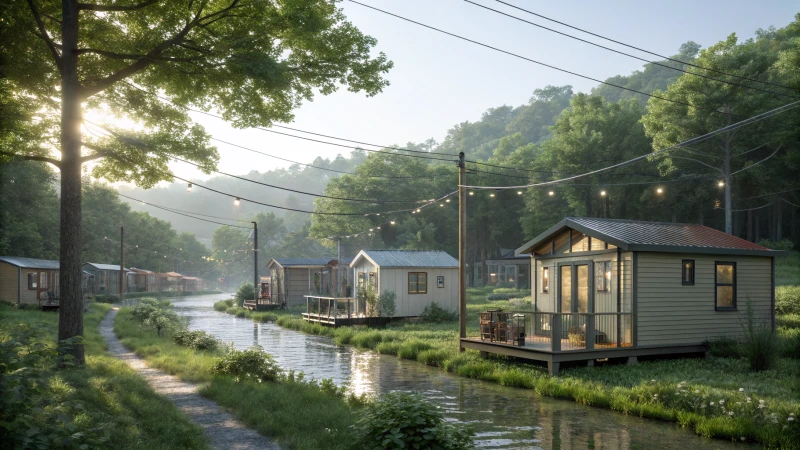
Water and Sewer Systems
Thinking back to when I first explored the idea of a tiny home community, I was overwhelmed by the logistical puzzle of utilities. It wasn’t just about finding a patch of land; it was about creating a space where everything worked seamlessly. Let me share some insights from my journey.
When planning a tiny home community, ensuring an adequate water supply and efficient sewage system is vital. Options include connecting to existing municipal systems or installing a communal system. A water utility checklist9 became my go-to guide for planning.
Electricity Connections
Powering a small home requires big decisions. Would each home have its own line, or should I opt for a shared system? Solar panels tempted me with their eco-friendly allure, despite the initial cost. Here's a little breakdown from my trial and error:
| Option | Pros | Cons |
|---|---|---|
| Individual Lines | More control over usage | Higher installation costs |
| Shared System | Cost-effective, easier maintenance | Limited power distribution options |
| Solar Panels | Sustainable, off-grid potential | High initial investment |
Waste Management Solutions
Managing waste efficiently was another crucial piece of the puzzle. Addressing waste management in a multi-home setup requires strategic planning. Consider shared dumpsters or individual composting toilets to manage waste efficiently. A comprehensive guide to sustainable waste disposal10 helped me navigate this tricky terrain.
Legal and Regulatory Considerations
In my experience, ignoring zoning laws and building codes is not an option. Navigating zoning laws and building codes is crucial when installing utilities for multiple tiny homes. Consulting with local authorities saved me countless headaches later on by ensuring compliance with all regulations. It's essential to understand how these rules affect what utilities you can implement.
Community Planning
Finally, creating a sense of community goes beyond utilities. Creating a sense of community among tiny homes involves more than just utilities. I spent countless nights dreaming up access roads and communal areas, imagining neighbors chatting in shared spaces. Designing a community layout11 that fosters interaction while maximizing space efficiency was key to bringing this vision to life.
Tiny homes can only connect to municipal water systems.False
Tiny homes can use either municipal or communal water systems.
Solar panels offer sustainable electricity for tiny homes.True
Solar panels provide eco-friendly power, reducing grid dependency.
Can You Establish a Tiny Home Community as a Business?
Ever thought about turning the tiny home trend into a business? It's more than just downsizing; it's about creating a lifestyle. I’ve often pondered the potential of building a community that offers both affordability and sustainability.
Yes, you can establish a tiny home community as a business. Key steps include understanding zoning laws, securing funding, ensuring utilities and infrastructure, and navigating local regulations. Consider offering unique amenities to attract residents.

Zoning and Land Use Regulations
When I first started looking into building a tiny home community, zoning laws were this huge maze I had to navigate. It's not just about placing homes on land; you need to make sure the land is zoned for such use. I remember spending countless hours researching zoning laws12 to ensure my vision aligned with local regulations. It’s crucial to check if your land requires specific land use permits or if there are density requirements that could limit how many homes you can place per acre.
Key Considerations
| Factor | Description |
|---|---|
| Zoning Laws | Ensure local regulations allow for tiny home placement. |
| Land Use Permits | Necessary for non-residential zones. |
| Density Requirements | May limit the number of homes per acre. |
Building Codes and Safety Regulations
The next hurdle was the building codes. I learned quickly that every tiny home must comply with local safety standards for things like plumbing and electrical work. In some places, tiny homes are considered recreational vehicles13, which changes the rules entirely. Understanding these regulations not only helps design a safe community but also prevents any legal hiccups down the road.
Utilities and Infrastructure
Figuring out the utilities was another adventure. Your tiny home community will need water, sewer, and electricity infrastructure. I found it essential to ensure the property could handle multiple connections, or I had to think about communal solutions like shared dumpsters or composting toilets.
Financial Considerations
Starting such a project isn't cheap, so securing funding is critical. I explored various options, from loans to partnerships, to support my project. It’s a significant investment, but potential revenue from rental income or selling homes outright can be substantial.
Marketing Your Tiny Home Community
Marketing is where you get to shine and show off your unique offerings. Highlighting features like eco-friendly designs or proximity to attractions can attract residents or investors. I’ve used platforms like social media and real estate websites to reach my target audience effectively.
Community Design and Amenities
Designing the community layout was a creative challenge I thoroughly enjoyed. Thinking about outdoor spaces, communal gardens, or shared amenities like laundry facilities can significantly enhance the living experience. Offering unique features sets your community apart in the market.
Tiny home communities aren't just about living small; they offer a lifestyle that's both affordable and sustainable. By understanding local regulations14 and carefully planning your business model, you can create a successful tiny home community that meets modern housing demands and provides residents with a unique living experience.
Zoning laws always permit tiny home communities.False
Zoning laws vary by location and often don't accommodate tiny homes.
Tiny homes must comply with local building codes.True
Local building codes ensure safety standards for tiny homes.
Conclusion
You can buy land for multiple tiny homes, but must navigate zoning laws, building codes, and utility requirements specific to your region to create a successful community.
-
Discover how residential zoning affects where you can place your tiny home. ↩
-
Learn the necessary permits for legally placing a tiny home. ↩
-
Find out how density restrictions impact tiny home placement. ↩
-
Understand the building codes that apply specifically to tiny homes. ↩
-
Explore utility setup options needed for tiny home communities. ↩
-
Discover how density restrictions affect the number of tiny homes per acre. ↩
-
Learn about HOA rules that might impact tiny home placement. ↩
-
Explore how environmental regulations shape sustainable practices in tiny homes. ↩
-
A comprehensive checklist ensures all necessary water infrastructure is considered, aiding in efficient planning. ↩
-
Explore sustainable waste disposal options that can reduce environmental impact and improve efficiency. ↩
-
Understanding layout designs helps in planning functional and aesthetically pleasing community spaces. ↩
-
Exploring zoning laws can guide you in choosing suitable locations for your tiny home community. ↩
-
Learn how local regulations might classify tiny homes to understand building code implications. ↩
-
Understanding local regulations helps in compliance and successful community establishment. ↩




